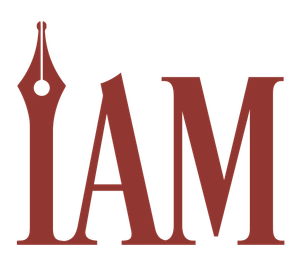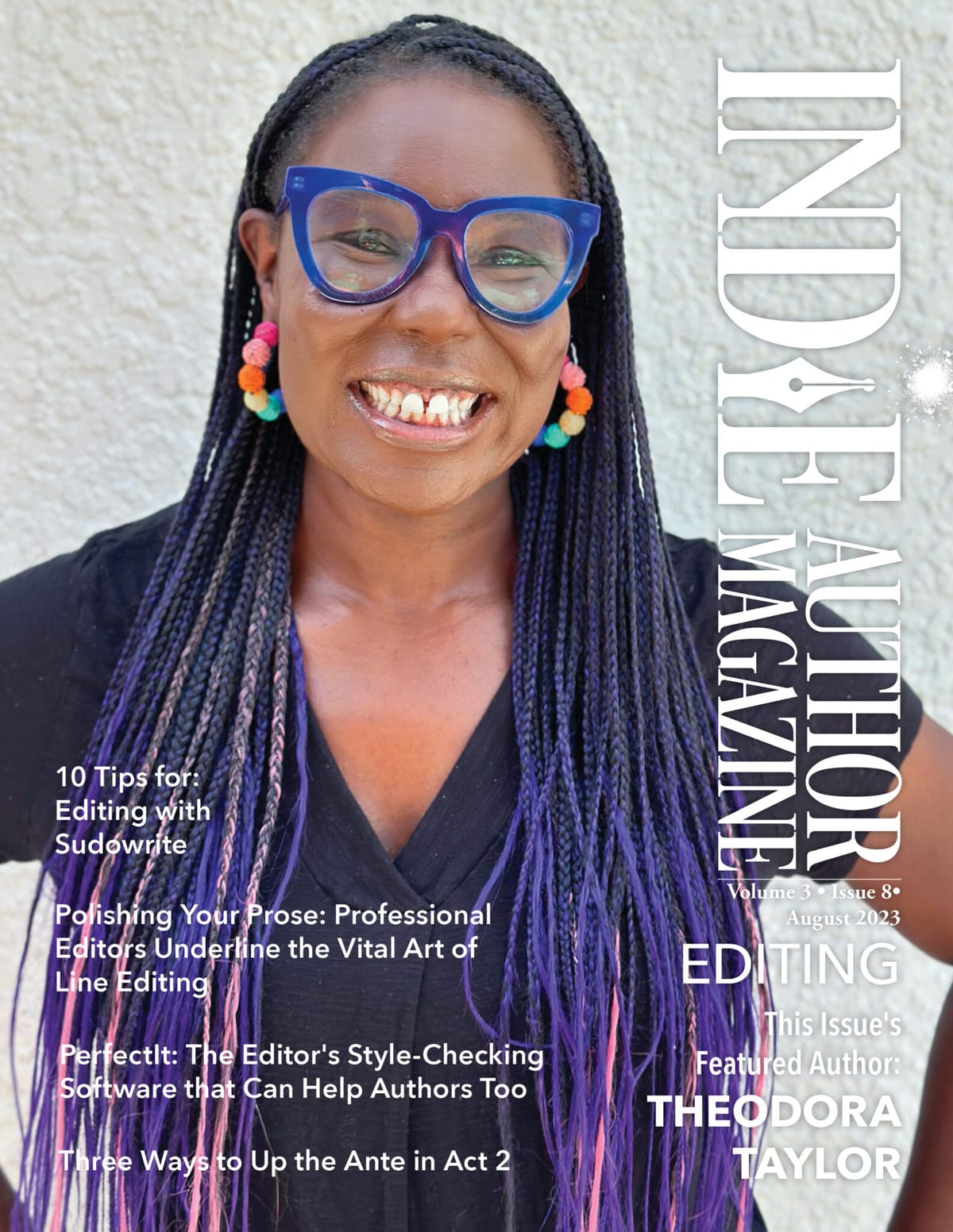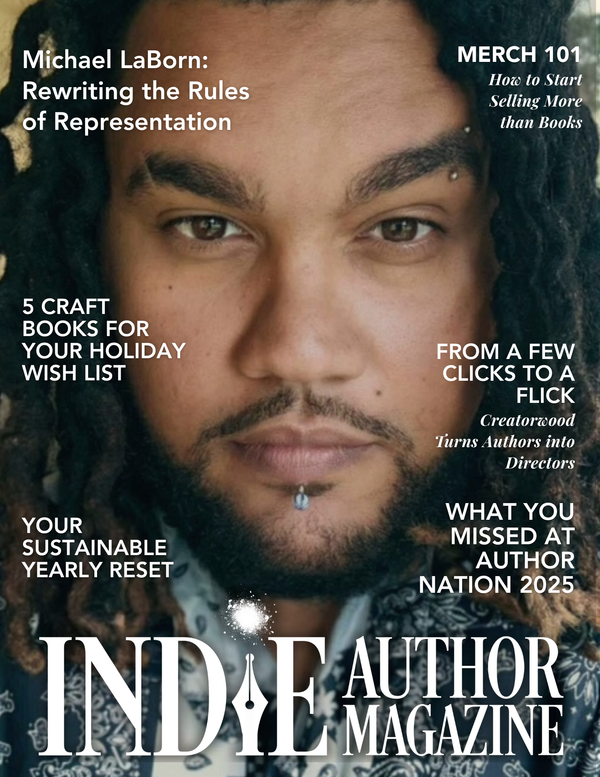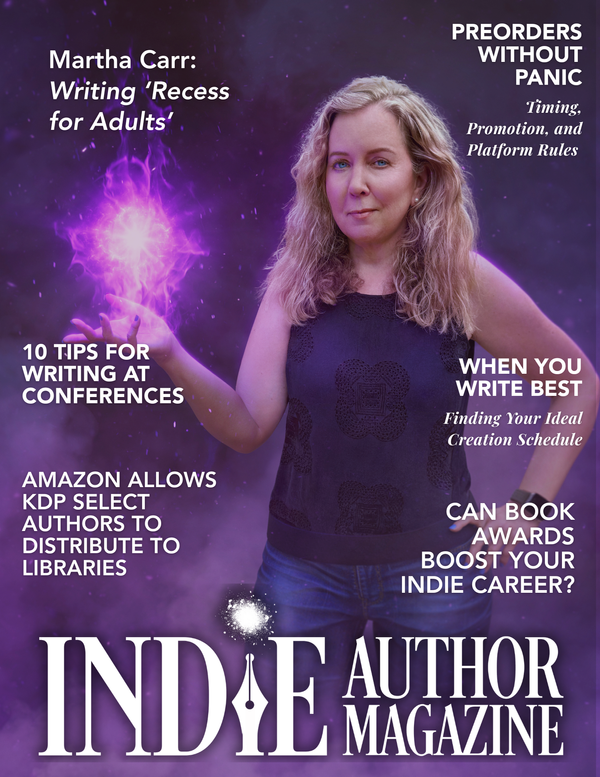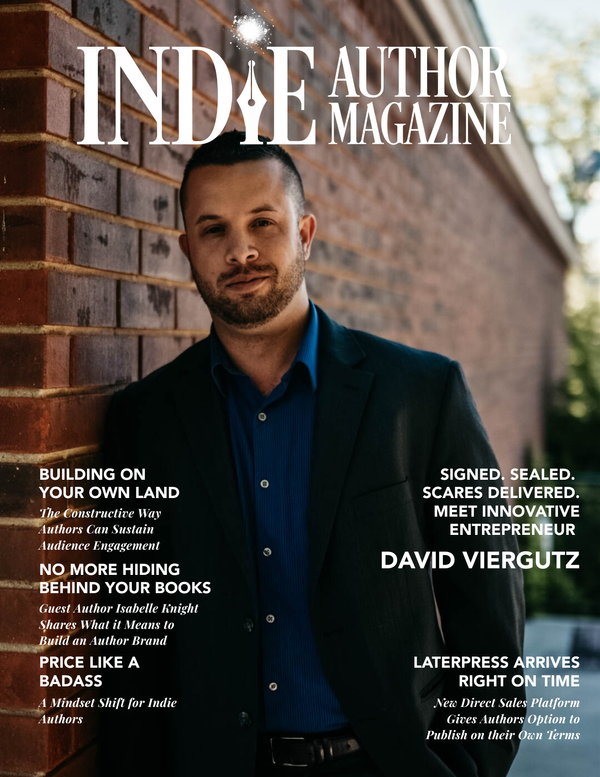Partner Spotlight
|
|
Master Line Editing for Professional Writing Success
Professional Editors Underline the Vital Art of Line Editing
Ernest Hemingway famously said “write drunk, edit sober." But what if you were still a little hungover when you learned about each of the different styles of editing?
Each type of revision may play a unique, but no less important, role in the editing process, but in novel editing, one stage of corrections seems to be easier for authors to brush over than the others—even if professional editors say you shouldn’t.
Confused? Don’t worry. Let’s back up and start with a basic overview of each stage.
Structural/Developmental Editor
Looks at the "big picture,” focusing on things like plot, character development, theme, and point of view.
When: You want guidance in writing your story, or you’ve finished a draft and want to know if it "works.”
Line Editor
Focuses on writing style and voice, pointing out awkward phrasing, unnecessary repetition, telling vs. showing, passive voice, dialogue, and any inconsistencies.
When: You know your draft is structurally sound and "works" in the big picture, and you’re ready to dive into more thorough corrections.
Copy Editor
Corrects spelling, grammar, and punctuation. Copy editors address commonly confused words and ensure consistency with capitalization, hyphenation, and numerals.
When: Your draft works, and your prose has been polished; you don’t need to make any more story-level changes.
Proofreader
Makes sure your book is as error-free as possible. Proofreaders check the "proof copy" for typographical errors, as well as look for layout and page number problems.
When: The book is formatted for print or digital publication.
If you did a double take when line edits and copyedits came up as two different edits, you’re not alone. Grab yourself a strong cup of coffee and settle in for a deep dive into what is probably the least understood phase of the editing suite: line editing.
The Finer Points of Line Editing
“Line editing is much more in-depth than copy editing,” says Kelly Rigby, a freelance editor, creative consultant, and writing coach with qualifications in creative writing and over twenty-five years combined experience working as a writer and editor. “It’s also called stylistic editing, and for good reason—line editing is about the art of writing and storytelling rather than the grammatical mechanics of it, which is what copyediting is.”
Jo Speirs is also an experienced line editor, copyeditor, and proofreader. “The main focus of a line edit is to ensure the story is as clear and engaging as possible to your readers, which is done through pace and flow, style, and tone, all while ensuring consistency,” she says. “Structural editing may look at the complete story, but line editing examines the individual pieces of the whole.”
A line edit can elevate your story from good to great, from a reader losing interest after the first chapter to them staying up late into the night turning the pages. Through line editing, you can create a more immersive story by showing rather than telling and discover ways to go deeper with your characters and create more engaging dialogue, all while retaining the authenticity of the author’s voice. A line edit can also add clarity to passages that may confuse readers.
How do you know if your manuscript needs a line edit? According to Rigby, it’s vital to any story. “We can’t see our own work clearly—everyone needs an outside, professional opinion. I would argue that even if you are a skilled writer, you need external help with your work.”
Speirs believes that if the manuscript has been through the structural editing stage and the author is comfortable with the overall plot, characters, and flow, but wants to make the story even better with a new perspective, a line edit could do the trick.
In an ideal world, authors would complete a developmental edit, line edit, copy edit, and proofread for each book. However, it’s costly to be ideal, and authors tend to look at where they can get the biggest bang for their buck. If you have limited funds but want to build a long-term author career and audience, Rigby’s advice is to spend money on a line editor who will consider copyediting elements at the same time.
“Emotional investment is everything,” she says. “Some copy editors will probably scream at me saying this, but copyediting and proofing make your end product look professional, but developmental and line editing make your reader buy your book, fall in love with it, and sing its praises to fellow readers.”
Food for thought, especially with software such as ProWritingAid or Grammarly that may help with copyediting and proofreading, not to mention peers and ARC readers who can spot any errors that still slip through.
So where can you find a good line editor, and how would you know if they are any good?
Like with any editor, the best way to start is by doing your research. “A line editor should be willing to do a sample edit and have specific markups to offer on your work,” Rigby says. “If they have little to contribute and your pages look clean, then I doubt they know what they’re doing. Seeing markups on your work is not a negative; it’s an opportunity to learn.”
Rigby agrees that asking for recommendations from trusted peers and having a chat with the editor to see if they understand what you are striving for is essential. “You want someone who works with your writing style and helps you enhance it, not someone who tries to change you. And they should be upfront about expenses and timing.”
Investing in a professional editor is one of the best things you can do for your manuscript. Your story will be much stronger with enhanced readability, and your skills and knowledge as a writer will also improve. But exactly how much of an investment are we talking?
The cost of editing varies from one editor to the next, though it is often determined by multiple factors:
the time the editor will spend on your manuscript,
the type of editing required,
the number of edits or passes needed,
the deadline or timeline to publication,
the word count, and
the quality of the writing.
Some editors price per word, others per page, and others per hour. Rigby recommends going with someone who prices per hour—you can still set a total cost at which you want them to stop and send you what they’ve done. Rigby says you can expect to pay at least $40 per hour for a professional editor, but someone experienced may charge up to $55 to $75 per hour.
“As a guide, for a fifty-thousand-word, structurally sound manuscript, the cost would be around $950,” says Speirs. “Other editors charge more, and others charge less. Again, do your research—like you would for any major purchase, ask for quotes and what the service includes, and work within your budget.”
Of course, you can get editing much cheaper. But it’s worth remembering that you’ll likely get what you pay for.
“Book editing is expensive because it's a meticulous process,” Speirs says. “Editors have to go through the book with a fine-tooth comb, checking for inconsistencies and grammatical errors. They have to make sure the book has a cohesive voice, consistent tone and a clear plotline, is entertaining, and is a book people will want to read.”
Working with a reputable editor is a valuable opportunity for skill development. “At the very least, it’s worth hiring a quality and recommended line editor at some point early in your career, just so you can learn from them,” says Rigby.
The moral of this story is that a good line editor will help make you a better writer. They can help you find your writing style and voice—that something special that will make you stand out. And though it can be easily overlooked by authors, that extra polish on your book might just be worth its weight in gold.
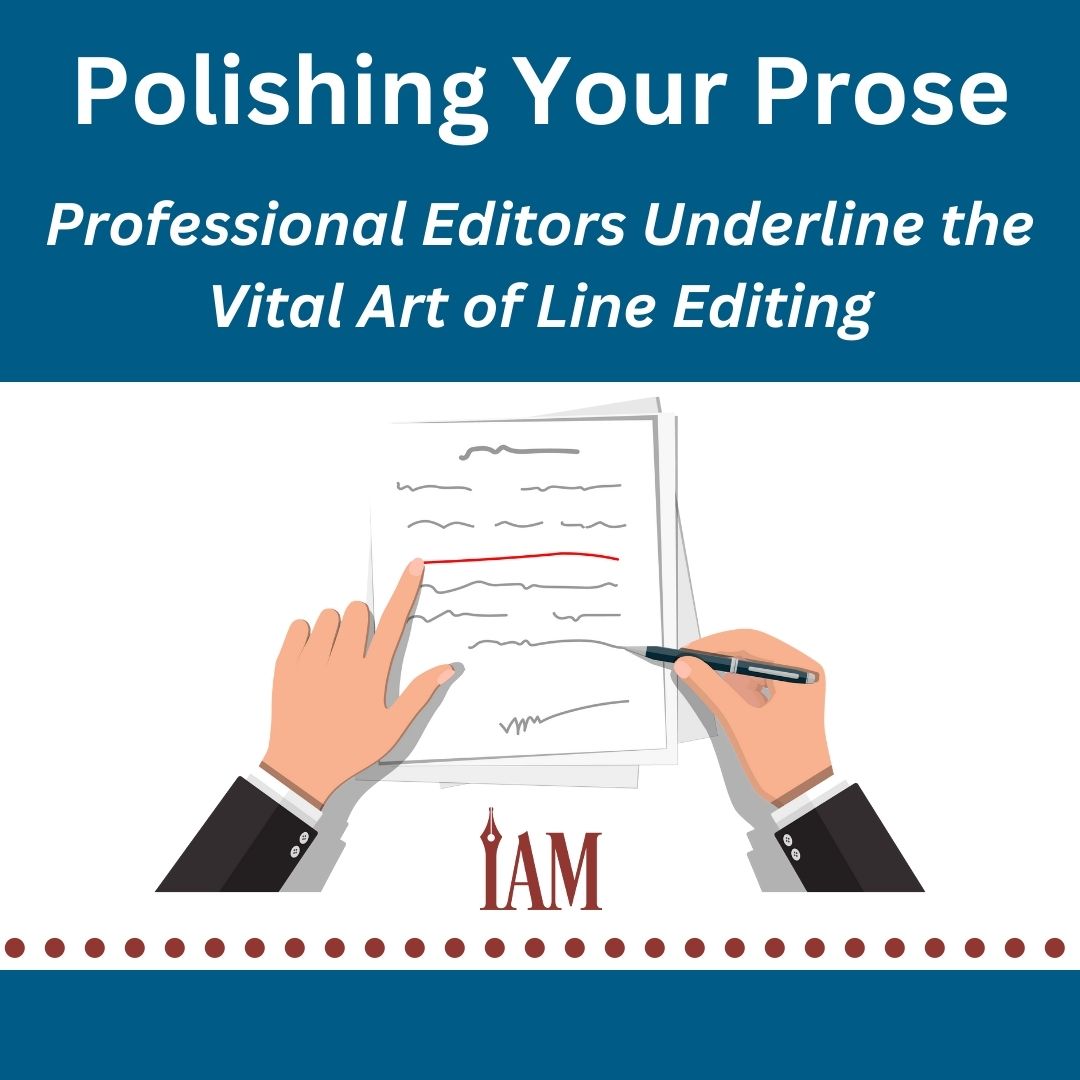
Revitalize Act 2: Boosting Suspense for Indie Authors
Sol Stein once said, “The function of suspense is to put the reader in danger of an overfull bladder.”
When suspense is properly implemented in a story, the reader is taken by the hand and led to great peaks and thrown off mercilessly, only to have them scurry up the next hill for you to do it again. Authors have a duty to the reader, a promise to fulfill in which the story moves along without wasting their time.
But the literal center of the book, called the “sagging middle,” has often been the child of literary neglect. In any genre, readers crave the rising tension of the beginning and the climactic mic-drop of the end; in between those two points, however, they often face endless travel logs, overfed descriptions, and entire chapters where nothing happens. Writers and readers both recognize the sagging middle, acknowledging a slog in writing and reading respectively, once the exciting wonder of a new story has worn off and before the climactic conclusion of act 3 kicks off.
It is not enough to simply “get through” the middle of the book. Readers need to feel like their attention is valued. Thankfully, dropping another hill in your character’s way is a viable solution to filling the middle of the story—and there are a few easy ways to do it.
Introduce a problem
There are many methods to writing a story, and it’s hard to dictate the right and wrong way to create art, but introducing a problem your characters must solve before they can move forward creates suspense by making the reader wonder what if?
What if Gollum turns Frodo against Sam?
What if Harry never makes it on the train to Hogwarts?
What if the Losers leave Derry and leave It to its own devices?
Characters with a problem to solve are not enough. Characters must be interesting and full, and the outcome of solving the problem should give them what they need—or what they think they need—to move forward in the story. A writer’s job is not to be nice to a character and deliver the goods to them on a platter. Be mean, implement a problem when your story starts to slow, and let your characters grow and learn in the process. Your reader will feel terrible for them, and that is the goal of a writer—to elicit an emotional response from the reader.
Ratchet up the tension
As a cousin to suspense, tension is the outcome of conflict. Rub your hands together enough and tap someone, and they might get shocked. Tension comes from the moment your brother chases you around the house with his statically charged hand; suspense leaves you wondering whether you’ll manage to get away. Readers love a bit of tension; they love to ponder what happens next?
Tension isn’t meant to be injected without forethought, however. Tension requires two or more points that tug on the characters, normally plot points, and threaten to pull them backward or forward in the story. In the sixth Harry Potter book, Harry is petrified on the train on his way to Hogwarts by his nemesis, Draco Malfoy, dragging the momentum backward. In Stephen King’s It, the Losers are terrorized by It individually, which causes them to suspend their disbelief that It has returned and pulls everyone forward in the story.
By tightening up plot points, you create tension and a more cohesive plot for readers.
Implement a plot twist
Plot twists can be tricky to do right, but it is so satisfying when you do. A well-crafted plot twist will strike a reader, dropping their jaw and renewing their investment in a story. A plot twist doesn’t have to be plot-altering. It just needs to be the result of an earlier planted seed that went unnoticed by the reader.
Remember the brother with the staticky hand? What if the would-be victim is a notorious prankster and had set up a piece of tape across the door he plans to escape to, which he ducks under at the last minute? Now, the prank is on the prankster.
Keep in mind, your readers will recognize a cop-out or deus ex machina if you haven’t set these details up ahead of time. Don’t forgo the details. Set out the evidence for your plot twist earlier in the story, and your readers will find it satisfying.
Now we have a story where the reader is invested in the outcome, which can go several ways.
Be flexible
It’s hard to dictate right and wrong in storytelling. There are only best practices, but even those can be warped by a writer armed with the right tools. If you’ve set the boundaries early on through a compelling story and believable characters, you can subvert these ideas and bend the rules.
The sagging middle shouldn’t be something you dread writing. If you dread it, the reader certainly will too. Look for ways to add depth and energy to your story, and keep the momentum for their arrival at act 3. Whatever you do, find a way to drag your reader up the mountain again, and keep the story moving forward to the finish line.
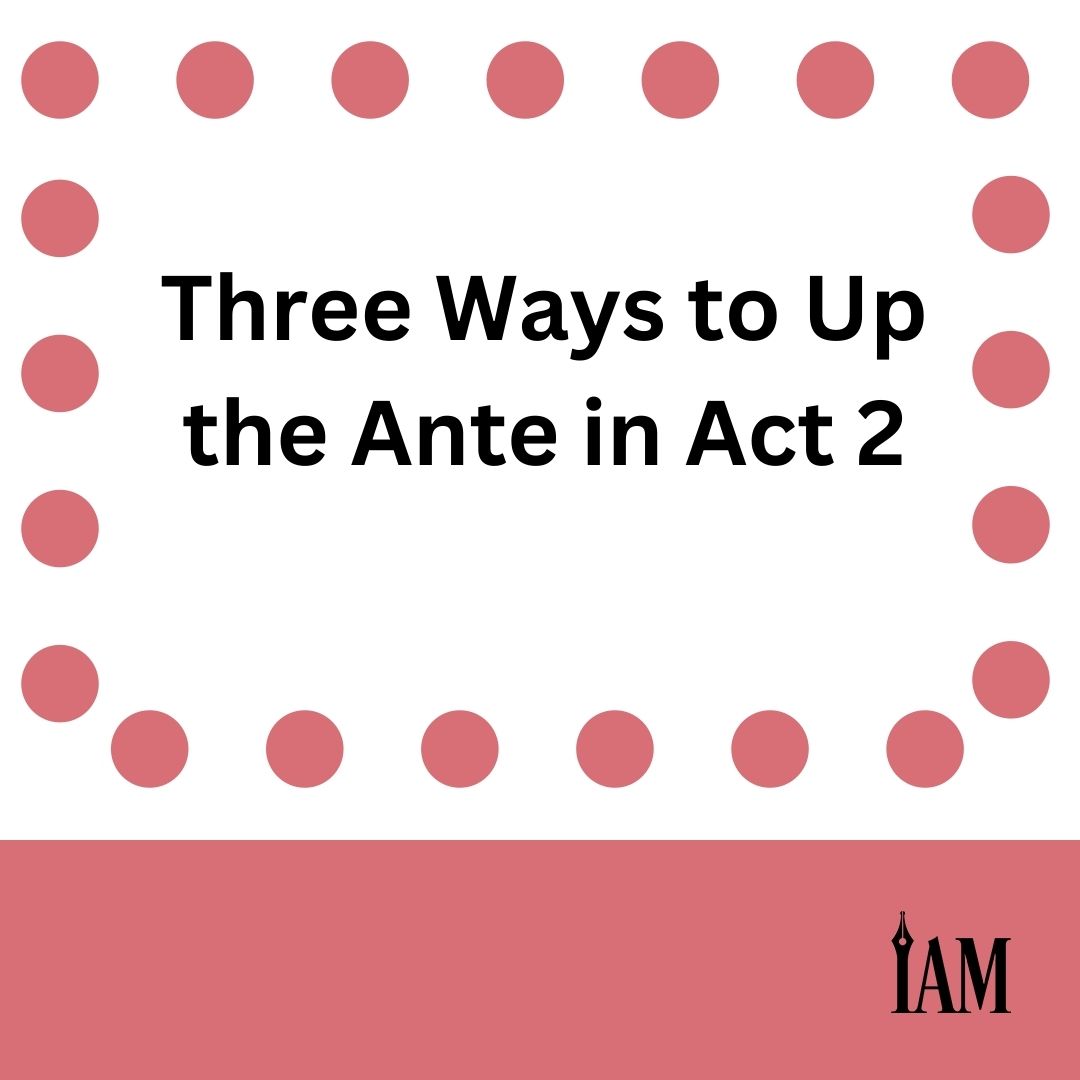
Should Indie Authors Use American English?
Traditional Publishers Edit According to American English. Should Indies Do the Same?
Hey. Howdy. Hello. Yo. Greetings. G’day.
These word choices for greeting someone tell a lot. They can reflect class, culture, age, and even nationality. But word choices can also reflect a writer’s country and its English usage, and differences go far beyond a simple greeting.
An author’s goal is to build readership—preferably a global one. Leave aside the issue of dialects within any English-speaking country; if you’re writing a book in English but not using common American usage, should you Americanize it?
The answer may be influenced by your potential readership. With e-books flattening brick-and-mortar-only choices, an author’s reach is global. Statistics support this. World Population Review released a report in 2017 that ranked the average number of books countries read annually. When using time spent reading as a measure, India devoted the most hours with more than ten per week, earning it the report’s top spot, followed closely by Thailand, China, the Philippines, and Egypt. When examining countries that read and purchased the most books, however, the US topped the list, followed by China, the UK, Japan, and Germany.
Americanize, or no? It’s a controversial question, and a personal choice for the indie author.
What Does It Mean to “Americanize”?
Attempting to “Americanize” a work may mean different things to different authors. For some authors, this might include exchanging spellings and punctuation for those meeting American standards, thereby making them recognizable to an American audience—for example, using the spelling in US English for “color” rather than the British spelling “colour,” or following American punctuation standards for things like quotation marks and dialogue tags.
Americanizing a work may also include word choice changes so American readers won’t feel they’re reading something they don’t fully understand, such as “apartment” (US) replacing “flat” (UK).
Other authors might opt for larger story changes. When Bloomsbury first published J.K. Rowling’s book Harry Potter and the Philosopher’s Stone in the US, the publisher opted to change the book’s title to Harry Potter and the Sorcerer’s Stone for American readers to ensure that “philosopher’s stone” wouldn’t get lost in translation or lead to American readers mistaking the novel for a philosophy book.
What about cultural references within the story that work in one country, such as Australia, but that an American audience would miss unless they’re familiar with names and places that are part of Australian culture? This would require much more significant changes and might alter the larger story.
What’s the Pay-Off?
Regardless of how an author defines Americanization, the choice revolves around whether it will deliver any pay-off. Will the difference be worth the time and effort for the author, or the author’s editor, to go back through the work and locate every word and punctuation style requiring revision? A risk here is having consistency issues crop up in your book—not for your characterizations or the plot’s timelines but in the style choices. What if you miss one or two words that are meant one way in the UK but have an entirely different meaning in the US?
Words have impact—and some word choices may knock the reader out of your story. You only get so many chances to retain your reader’s attention before they close the book for good. If a UK author writes a character’s scene and has him putting luggage in the boot, a US reader might puzzle over how the character will get that luggage to squeeze into their rain boots—called “wellies” in the UK. Changing “boot” to “trunk” could help US readers remain focused on the story.
The same goes for spelling. English may be a common language for multiple countries, but that doesn’t mean the spelling is consistent. Some words can be spelled differently across the pond to such a degree that it could stop a reader mid-sentence as they puzzle out what they’re reading—the way a learner of a foreign language might. But a foreign language learner is engaging in study, and your reader is trying to relax during precious downtime.
So in some cases, Americanizing a work can make your work easier to understand for international readers. Yet in others, changing spelling and grammar to something more digestible may create more confusion than it solves. Consider your story’s setting. Setting is a character, and word choice can be key to immersing readers in a story or making it believable. If a story takes place in London, and the character’s speech portrays social class or education, then it would create a disconnect to make the character sound American. On the other hand, if a UK author writes about a New York-born character, using UK terms will sound inauthentic, or worse, pretentious. The character wouldn’t have the same ring of truthfulness as if their speech were Americanized.
Readers come to books for different reasons. Many readers appreciate learning something new while reading, such as the ways and mores of another culture. It’s easier to pick up a book and immerse yourself in another culture while riding the train to work than it is to travel there, and a reader may not mind having to decipher the meaning of an unfamiliar phrase.
If you aren’t sure whether to Americanize your work, or how to go about doing it, you might consider going to the “experts.” Search for international beta readers or editors who can help flag confusing words or phrases. As you may have encountered in your own experience, local nuances, slang, and other linguistic twists can only be ferreted out by someone steeped in the culture.
The decision to Americanize your work is as individual as your unique voice. Keep in mind what you think is best for your story and its readers, and you can’t go wrong.
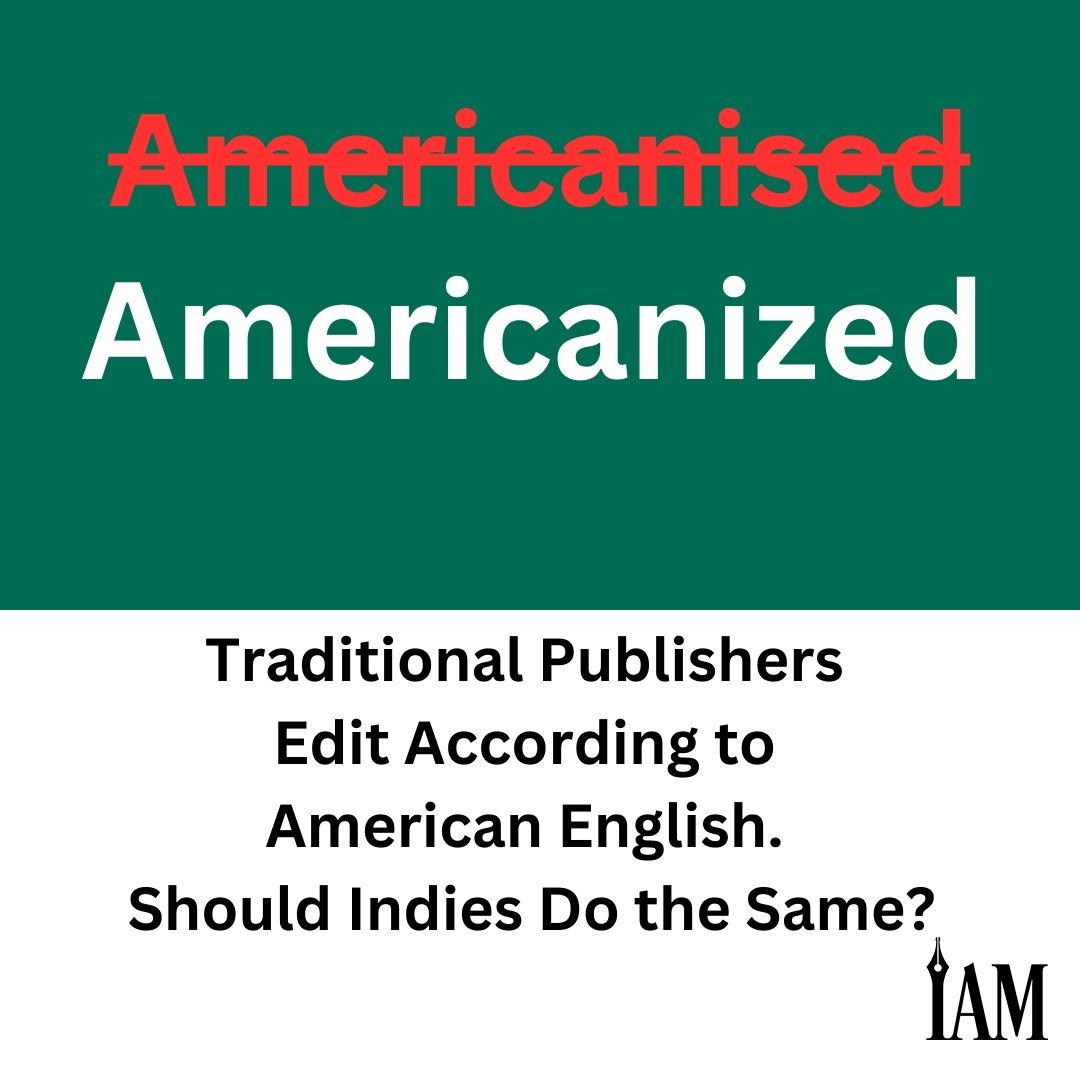
The ROI of Hiring Professional Editors
Want to ensure you make a fantastic living as a writer? Then do what the pros do and turn to editors. Why? Because crisp, clear writing creates a clean, smooth read your readers will love.
And what happens when someone loves your writing?
They share it with others.
It might seem counterintuitive to devote time, energy, and, most importantly for some, available funds to pay for a professional editor. I mean, won’t a good run through Grammarly do?
No. In fact, I would argue the return on investment with editing is high—maybe many times higher.
Think of it this way: when was the last time you read a book, article, or blog post and it was abundantly clear the author didn’t even bother to run a simple spell check or relied on amateurs to do the heavy lifting? Did you keep reading it? No, probably not—and if you did, it was under duress, amirite?
What was the opportunity cost to the writer? I believe it is incalculable. A great editor, in the form of an actual person, is going to give your writing the boost it needs. And I’m not talking about your beta readers or your advanced reader team; they have their own important roles to play in the publishing process.
When I read a book I end up loving, I (a) tell everyone, (b) buy copies to give as gifts, and (c) share it.
I also become a superfan of the author, which means more money in their pocket over time. I listen to their podcast interviews, buy their books, and share their work with my center of influence. Rinse and repeat.
But if the writing is poor due to lack of editing, I move on. My TBR pile already goes to the moon and back at least three times.
I realize editing is possibly the largest investment you’ll make in your book, but it’s for good reason—the number one way a book is discovered is through personal recommendation. (It stands to reason the same is true for any writing, but I digress.) If your cash flow is limited or you’re tight on time, here are a couple of ways to get an editor’s polish on a budget:
Find an editor-in-training. There are lots of aspiring editors, and many of them sit at the feet of masters. They are learning from someone much more experienced, and your writing might even get a quick pass over their desk! You’ll pay less while enjoying the benefit of having human touch.
Regardless of the experience of your editor, if you use a software like Grammarly or ProWritingAid, let them know, as they might charge you less for cleaning up your writing ahead of time.
Many writers miss their deadlines, leaving their editor with an unexpected open space. Even the best and most experienced editors sometimes find themselves with unexpected availability, so put yourself on their waitlist, and you might be surprised how quickly they can get your manuscript finished.
Although using an editor is standard, there are still ways to maximize your investment in one. Allow me to share some extra tips that will help you magnify your investment, right back to your wallet:
Tip 1: Find your person. Hire the best you can afford, check references, and do your due diligence. A bad editor costs you time and money, the exact opposite of what you need. Get a recommendation for an editor, talk to a few of their clients, and have a chat so you can see if you “click.” Rapport with an editor is crucial to the process (see Tip 3).
Tip 2: Book ’em, Danno! Great editors book in advance. Once you have your production schedule written in ink, sign a contract, and pay your deposit. And use that deadline to keep your writing on track.
Tip 3: Get ready to see red (ink, that is). The right editor will preserve your voice—crucial to engaging those superfans—while making what may seem like millions of corrections to your writing. This is great! All of my manuscripts come back looking like a crime scene, but when the red is removed, I have a manuscript that is better for the effort. In other words, let your editor do their job, and don’t take it personally.
I know the cost of an editor can feel prohibitive, but I hope you’ll look at it as an investment that will return to you many times over for a long time to come.
Cheers to a prosperous editorial collaboration!
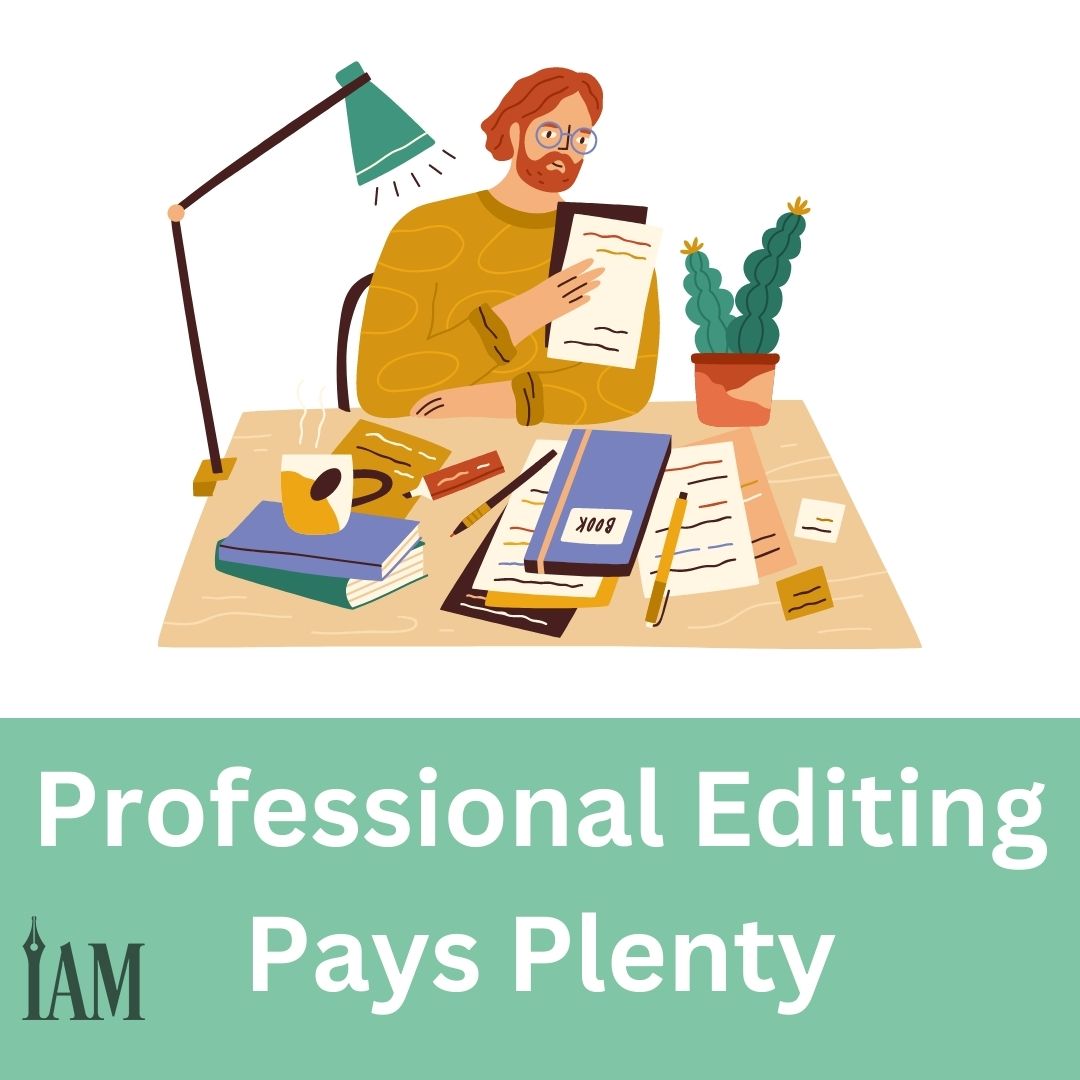
Find a Reliable Editor for Indie Authors Business
Dear Indie Annie,
I like working with my usual editor, and I know she’ll clean up my draft without messing up my writing style. But this draft took way longer than I intended. Now she’s booked, and I have to find someone else to take on my current WIP! How can I find an editor I know I’ll mesh with?
Editor-less in Edwardsville
Dear Editor-less,
Dear one, editing is like dating—you've got to kiss a few frogs before you find your prince (or princess). I say throw that manuscript wide open, like a fabulous gala ball, and waltz in some fresh faces!
I appreciate it’s hard to find another beau when your heart is still yearning for what you had, but this is business, and you have to pull on your grown-up panties and move on. Your editor has. And, without being unkind, my dear, you did leave them hanging.
So let's focus on how you can find the right editor match for you.
Start by ditching the wrong ’uns—editors who take forever to respond, miss deadlines, or give half-baked feedback. Remember, you are in charge. It's a professional partnership. Expect your editor to act accordingly.
Make a list of must-haves: Do you need someone who specializes in your genre? Has experience with indie authors? Has a quick turnaround? Knows your pet peeves about edits?
Then ask around. Put the word out to writer groups, social media, and folks you trust. Sometimes the best editors are the ones your author friends recommend.
When you interview candidates, trust your gut. Red flags, like defensiveness, unprofessional communication, or failure to understand your writerly vision, mean it's time to bid them adieu.
Now, it seems you have been off the dating scene for a while now. So, my sweet, here are some extra tips from your good old auntie, Indie Annie:
Momma may have said beware of invitations to go back to their room to “view their etchings,” but in this case, it’s vital that you look at samples of their previous work. This will give you a good idea of their editing style and the level of quality they provide. Ask to see edited excerpts from books similar to yours.
You’re going to be their employer, so ask for references. Reach out to authors they've worked with in the past, and get honest opinions on the editor's skills, communication, and ability to meet deadlines.
Shop around. Speak to several editors to compare rates, turnaround times, and specialities. Get a few options before choosing one.
Share your vision of a happily ever after. Discuss your writing and editing process in detail. Make sure the editor understands your goals and style. Ask how they approach content editing, line editing, and copyediting.
Try before you buy. Ask the editor to review a sample chapter, then discuss their feedback and suggestions in-depth. This will give you an idea whether their notes help improve your work and if you have a good rapport.
Ask for a prenup. Okay, you aren’t getting married, but you must request a contract. Even freelance work should have a written contract detailing responsibilities, schedules, payment terms, and recourse if either party needs to terminate the agreement.
Look for chemistry. Trust your instinct on whether this editor understands and appreciates your unique writing. If you aren't vibing well during interviews, the actual editing process may be stressful.
With the right preparation and research, you'll find an editor who is an excellent match for your writing and your book's needs. The right editor for you is out there, waiting to make your book the best it can be. You've got this, sweetheart! Now get back out there and keep kissing frogs. One of them is sure to turn into a prince who can promise you editorial bliss.
Happy writing,
Indie Annie
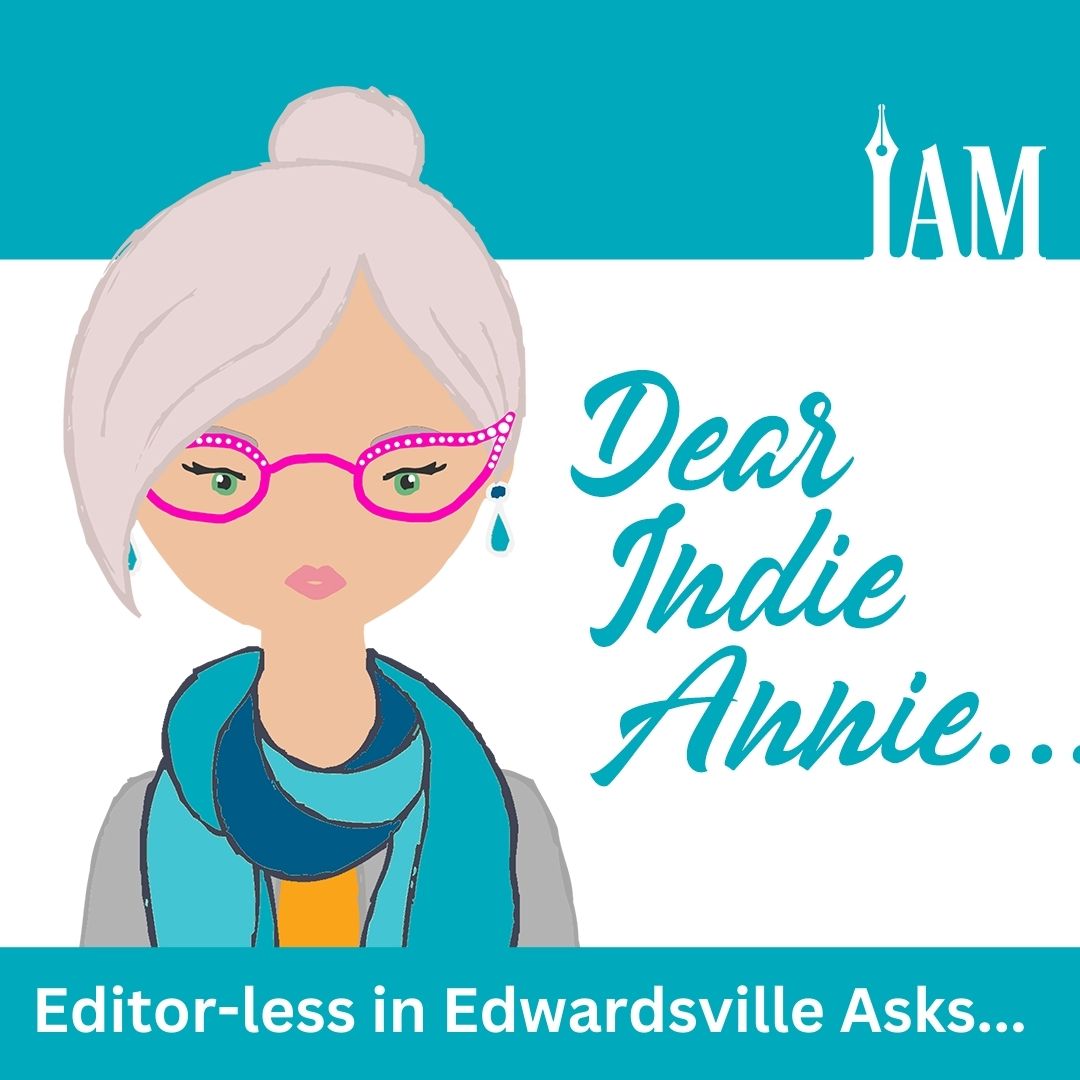
The Journey to Bestseller: Writing as a Business Strategy
I’ve been writing full time for nearly eight years and have over seven million words published—a lot more if you include collaborations. This job isn’t for those who aren’t committed to themselves.
You wake up. You get your coffee or tea or Diet Coke, and you think of the words waiting to be written while drifting back to the words already there and fiddling with them to make them better.
You hope you’re making them better. And then you flow into the blank page.
Long-term success in this business is about the words. Had I written one book eight years ago and not written since, I would be lost to obscurity. No one would read that title from so long ago. With new books, new readers will find you, and if they like your style, they’ll go back, all the way to that first book. They’ll be forgiving as long as your first is a good story, even if it’s not written with the panache you have learned through practice.
My first book is going strong. It’ll be on sale in a couple of weeks for a big promotion. It’ll move a bunch of copies and bring people into the many worlds under my umbrella.
It’s all because I keep writing. Sometimes it’s not easy, but every time, it is an escape. I love to tell stories, shape the scenes, detail the ebbs and flows a reader must go through to get to the end. I write fewer words now than I used to. For the first five years, I averaged nearly 2,800 words per day. Now, I’m happy with two thousand words a day. I spend more time massaging the text nowadays, but I’m not sure that makes it better.
From obscurity to a million sales. Eight years. My fingers are a little stiffer than they were before, but they’re still nimble when I envision the three-dimensionality of a scene within which the characters grow. And then I get to share that scene with readers who ask me for more.
I’m writing this article May 29, 2023. My second book to publish this year goes live tonight, after nearly 1,200 full-price preorders. I’ve written five books this year but am stockpiling for a tidal wave this fall when KENP rates on Kindle Unlimited should increase—that’s the historically supportive bet—to move a revenue windfall into 2024. I’m running backlist promotions a couple of times a month to keep the revenue streams juiced between releases.
It’s all because I write. Quantity has a quality all its own, but quality is the final arbiter. Readers will not come back if the books aren’t good. Write a good story and put it in the right readers’ hands. Then do it again and again.
Eight years. And it’s okay, because I know what it has brought me. I spent three hours in the woods with my dog, Stanley, yesterday, on six different walks, because I could drop everything and go out with him. It was a beautiful day. And I also put 2,600 words into my current work-in-progress.
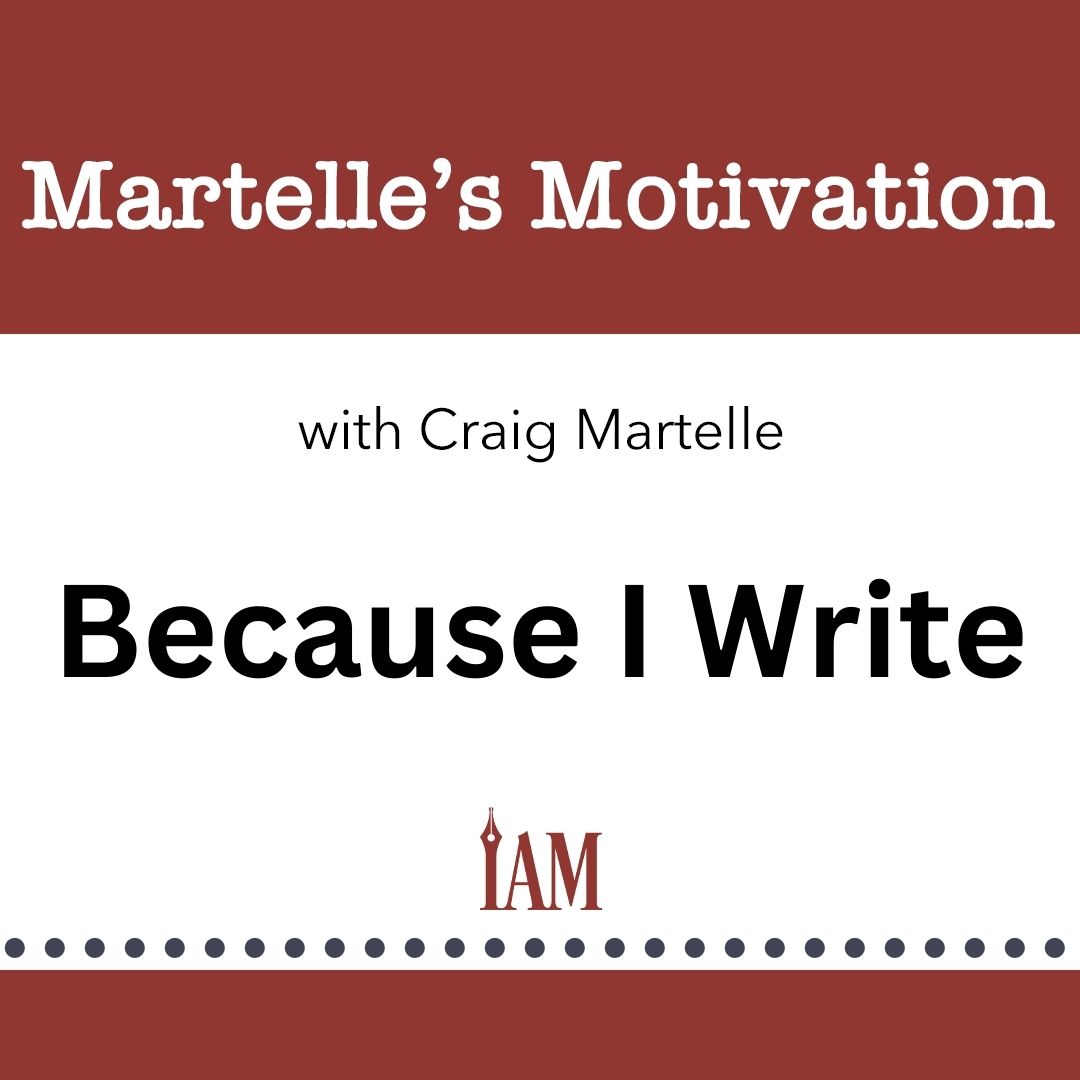
Optimize Your Ads with Amazon Attribution
Amazon Attribution Links Remove the Guesswork from Your Ad Campaign
One ads strategy I typically recommend involves running multiple ads to determine which will resonate with the audience. I spend some money and sell some books, but if I have five ads for the same book, how do I know which one is making the sales?
Before Amazon introduced Amazon attribution links, the advertiser on Facebook—yes, Facebook, not Amazon—had to guess.
Intelligence could steer the decisions. A low cost-per-click or a high unique outbound click-through rate were good indicators that an ad was working for a given audience.
But Amazon attribution links remove the guesswork by showing you exactly how many books an ad has sold on the platform.
You can create an attribution link in your Amazon advertising console by clicking the symbol that looks like a graph on the left side of the window. This will be familiar to anyone who has ever created an Amazon Ad. You can find how-to videos to guide you through the rest of the process, so I won’t attempt to cover it here.
Figure 2
What you see here is the report for one of my campaigns. I have multiple ads running, and the identifying name for each—as shown in the “Ad Group” column—is the same as that used in my Facebook Ads. You can call them whatever you want, as long as you can identify which line in figure 2 corresponds to which ad on Facebook.
This is a fairly extreme example, but hopefully, you can see that ad 6 is outperforming the other ads by a significant margin. Ad 2 is also performing well. One reason ad 6 is performing so well is its budget, which is higher than the others. Therefore, to fully analyze the results, it may be necessary to create a spreadsheet to calculate books sold and KENP pages read per dollar spent.
With this spreadsheet and a simple analysis, you can run Facebook Ads and use the links from Amazon attribution to see which ads to cut and which to push. Of course, this only works for traffic driven to Amazon as a shopping platform. But if you are wide and have more sales somewhere other than Amazon, you can use the results from Amazon sales as a benchmark for ads to other platforms.
Keep in mind, too, that although I have only talked about using these to aid your Facebook advertising so far, they can be used anywhere.
I have created links to use on Bookbub ads and successfully identified which ads on Bookbub were actually selling books. You could use the links to measure the effectiveness of a promotion you have paid for on Written Word Media, Robin Reads, BookDoggy, or on one of several other sites available. You could use the links to see how many of your newsletter subscribers make a purchase from an offer you give them, or you could employ them to optimize author swaps on services such as BookFunnel or StoryOrigin.
Amazon attribution links allowed me to double my ad spend and more than double my income. I hope it can help you do the same.

Sudowrite Editing Tips for Indie Authors
Many writers in the indie community know the AI generative writing app Sudowrite (https://sudowrite.com) for its ability to serve as an always-there assistant in the writing process. The program runs on a subscription model based on the number of generated words per month and markets itself as “the … AI writing partner you always wanted,” according to its website. But the app isn’t just for writing.
Writers who have finished drafts can also benefit from Sudowrite’s editing capabilities. After all, the app uses OpenAI’s GPT-3.5 and GPT-4, as well as Anthropic’s Claude, according to a tweet by Sudowrite founder James Yu, as base models. As explored in an April 2023 IAM article, large language models such as GPT already can help authors edit text in a variety of ways.
If you’re not familiar with Sudowrite, IAM’s Elaine Bateman hosted a Q&A of sorts with the program in April 2023 that serves as an introduction to the app and an overview of its features. But once you know the basics, why not take it a step further? We’ve gathered ten tips for using Sudowrite to polish your manuscript. Use them to get the most out of your subscription, and find out how the app can help transform your already written prose into something even more compelling.
Create a ‘Scraps’ File for Snippets of Text That You Love But Don’t Use
Create a chapter in your project called “Scraps” and place it at the top or bottom of your table of contents. Any time Sudowrite gives you a stunning description you love but don’t use, save it to your Scraps file in case you want to access it later.
Sudowrite functions like many writing apps in that it lets you navigate your manuscript’s chapters on the left-hand side of the app. When you create a Scraps file, it will always be available at the click of a button.
If you finish your current project, save unused scraps into a digital notebook such as Apple Notes, Google Keep, or Microsoft OneNote. You may want to use those snippets in future works.
Use the ‘Write’ Feature to Finish Incomplete Chapters
If you write first drafts with incomplete scenes, you can use the “Write” feature to fill out sections that need help. This feature uses GPT’s autocomplete capabilities to continue where you left off.
According to Sudowrite advocate Elizabeth Ann West in a webinar on February 6, 2023, on the official Sudowrite YouTube channel, the “Write” feature will read one thousand words above the mouse cursor position. It reads “up” but not “down,” so it won’t process text below your cursor. You can also provide a written prompt for what you want the AI to write.
Once you’ve generated text, keep what you like and edit it to taste.
Adjust the AI’s Creativity
In “Write Settings” under “Write,” you can adjust the AI’s “Creativity,” or how closely the AI will obey your written prompts. You may want to turn the creativity to its lowest setting for best results, West recommended in the webinar, though letting the AI be more creative could lead to interesting prose choices.
Use ‘Describe’ to Make Your Scenes More Vivid
“Write in the five senses” is common writing advice, and Sudowrite can help fill in details for any you might be missing, as well as develop engaging metaphors to describe them.
The “Describe” feature will take highlighted text and improve it with detailed description in each sense. This feature provides you with numerous descriptions and metaphors that you can choose from. Even if you encounter descriptions that don’t fit the moment, you may want to use them elsewhere in your manuscript.
Pro Tip: You can choose which senses Describe will use and turn the others off. For example, if you want to describe someone’s eyes, you may want to leave “Taste” unchecked, or you’ll receive unusable results. Since you can only generate so many AI words each month—currently, the totals range from thirty thousand to three hundred thousand words based on your pricing plan—this will help you get the most value out of your Sudowrite subscription.
Use ‘Rewrite’ to Further Flesh Out Your Scenes
If you’re guilty of writing thin prose in your first draft and can’t figure out how to improve it, Sudowrite’s “Rewrite” feature can assist.
“Rewrite” allows you to select a section of text and rephrase it, add powerful descriptions, mimic a famous style, and more. The program’s built-in options include:
Rephrase
(Make) shorter
More descriptive
Show, not tell
More inner conflict
More intense
Customize
If you select “Customize,” you can direct the AI with a written prompt.
Pro Tip: While Sudowrite doesn’t generate cliches often, you will still need to review your work for any instances of hackneyed prose. Grammar checkers such as Grammarly and ProWritingAid can assist you with this review.
Experiment with Your Prompts (and Save the Results)
As with any AI program, you may not get amazing results with your first round of text generation prompts.
Don’t be afraid to tweak your prompts. Elizabeth Ann West recommends structuring prompts as follows: “[Do] [What] [How].”
Start with minor adjustments to your prompts. When you find the perfect match, write it down so you can use it in the future. This will take time and cost word generations at first, but developing go-to prompts will save you both time and word generations in the long term, further maximizing the value of your Sudowrite subscription.
Use ‘Rewrite’ for Basic Line Editing and Copyediting
Rewrite can also perform basic line editing and copyediting. According to Sudowrite advocate Leanne Leeds in an article on editing with AI, published on the program’s blog, use a prompt such as “line edit” to both expand your text and fix spelling and grammar errors.
Not only will Sudowrite follow your instructions, but it will also fix any typos it finds and automatically show you what it changed by highlighting that text in purple.
Use ‘Expand’ to Build on What You Already Have
Like “Describe” and “Rewrite,” the “Expand” feature allows you to select a section of text that the AI will build upon. “Expand” is best thought of as a mixture of “Write” and “Describe”—it will continue writing the story from the mouse cursor in small increments, and it will add description, dialogue, and narrative.
“Expand” will round out your text, but be sure to edit afterward to blend the results with your author’s voice and to maintain your story’s pacing.
Use the Google Docs Chrome Extension
If you write in Google Docs, Sudowrite has a beta Chrome extension for desktop browsers on Windows, Mac, and Linux devices that may make using the program even easier. The extension lets you use “Write,” “Rewrite,” and “Describe” features directly in your document, so it’s perfect for editing sessions.
For writers who use Google Docs for their drafting, the Sudowrite Chrome extension is a convenient way to incorporate AI into the writing app without the need to transfer text between Google Docs and Sudowrite.
Integration with other writing apps is not yet available.
Provide Feedback to the Sudowrite Team
Every snippet of generated text in Sudowrite has “thumbs up” and “thumbs down” buttons for users to evaluate the program’s suggestions. Be sure to rate the results. This will help the Sudowrite team refine the app and provide better generations in the future. It’s easy to ignore these buttons, but they can make a big difference in how the app evolves.
As OpenAI improves its flagship GPT large language model, Sudowrite will inevitably continue to improve. For more information on utilizing Sudowrite’s editing capabilities, or to keep up with updates to the program, subscribe to the official YouTube channel at https://youtube.com/@sudowrite4400 and follow the official Sudowrite blog at https://blog.sudowrite.com.

Writing Romance That Sell: Theodora Taylor’s Tips
Theodora Taylor’s Recipe for Writing Marketable Books Without Writing to Market
Ingredients
Theodora Taylor knows what her readers are hungry for. The Amazon Top 10 bestselling author has a seemingly never-ending backlist of interracial romances, with stories that explore a range of cross-genres and subgenres, from Fantasy to Billionaire Romance.
She describes her fiction as “hot books with heart,” but she’s also carved a niche for herself with a course and a series of nonfiction books, written under the pen name T. Taylor. With these, she advises authors on writing what she calls “universal fantasy,” a particular category of story element that can add “butter,” or extra flavor, to their books.
Now, she’s sharing her experience in becoming a “writer-chef” and discovering all the ingredients that make her writing taste good.
Prep
Theodora studied English literature at Smith College and holds a master’s of fine arts in dramatic writing from Carnegie Mellon University. She spent the early part of her career in LA, where she worked as a playwright, music journalist, and theater critic, until eventually taking a job writing for American Top 40. She loved writing for radio, but the hours became unsustainable after the birth of her first child.
So she shifted to books. Since she’d been working on a Women’s Fiction novel for a few years by then, she tried the traditional publishing route, thinking she’d be a stay-at-home writer-mom. Unfortunately, she quickly discovered both the challenges of writing at home with small children and the unpredictability of traditional publishing. Despite the years she put into her first book, it didn’t earn out the advance, and the publisher was less excited about her second one, telling her it had a lot of problems. “But wow,” she said, “the sex scenes were great.”
Theodora called a friend afterward, crying. “She hated everything except the sex scenes,” she told her. “I should just become a Romance writer.”
Although that Women’s Fiction novel was eventually picked up by Amazon’s Lake Union imprint, the initial rejection was a lightbulb moment for Theodora. She’d always loved Romance and had read a lot of it from a young age. After attending a writing conference where a panel of indie Romance authors seemed much happier than their traditionally published peers, Theodora decided to take the chance.
She wrote her first Romance novel in three months and got paid two months later. Theodora loved having the freedom to take the advice she wanted and leave the rest, hiring an editor who wouldn’t tell her what to do, and being completely in control of her indie author career. She says she felt more comfortable taking risks because “if something fails, you just try again.”
Eleven years later, she’s been able to take what she learned from writing those first two Women’s Fiction books and apply it to her Romances. Once she adjusted from her experience as a playwright to a more narrative style, she found drafting Romances came much more quickly. Theodora can now finish a book in four to six weeks if she’s up against a preorder deadline, although that’s not her preferred routine. Still, she says she’s always jealous of the authors who can do it faster. “No matter how fast you write, you’re always like, ‘There’s this one author I know …’” she says.
She currently has over sixty titles available on her website, and over one hundred listed on her Amazon author page. Theodora’s bestselling series, 50 Loving States, attempts to set at least one book in every state. With five books to go—she has yet to write Georgia, Minnesota, New Hampshire, Utah, and Vermont—she expects to finish the series in 2024. This summer she went hiking in Minnesota for research.
Within the genre, her niche is interracial relationships, like her own—as well as an increasing number of marriages, according to the US Census. However, Theodora also genre-hops within her series to include shifters, billionaires, mafia, vikings, dragons, motorcycle clubs, cowboys, and anything else that interests her.
“I never really look at the market,” she says, “because I’m never sure I can write to that trend if I don’t love it. But sometimes my mood matches the market. For example, with ‘Why Choose’ Romance, I was like, ‘Oh, I like “Why Choose”’ Let me try that.’ And that did really well.” Most recently, she published a series about Scottish shifters, which she says wasn’t really on trend, though shifters in general are perennial among romance readers.
Method
Theodora’s writing routine varies depending on upcoming deadlines, new projects, and her own whims. In the past, she’s worked out of a writing shed at her home in California or a condo in Barbados. “I love people who keep the same routine all the time, but I’m always just kind of like, ‘Where are you at in your season of writing? What do you need to do?’” she says. “Find a routine that will help you do that.”
Her current routine involves getting up early, taking a walk, and then reading a book. She writes with friends from 8 a.m. to noon. After lunch, she says she tries to take a bath or a nap, but it doesn’t always work out. Then she takes an art class “because I’ve always wanted to learn art.” She finishes her workday with a snack and administrative tasks.
Theodora often writes with the same partners, who challenge themselves with sprints or work out craft problems together, “but it changes depending on where I’m at and where other people are.” For example, if she’s on a deadline, she says it helps her to write with someone who’s also feeling that stress. Her favorite collaboration is sprinting admin work with a friend on the West Coast, or meeting up with a friend who specializes in editing and consulting to “just do the hard things,” or the “things you’re scared to do.”
Toward the end of the year, Theodora often goes into what she calls “a season of writing,” during which she’ll dedicate whole days to solitary work and shuttle everything else until she closes out a project. She’ll warn her children that they won’t be seeing as much of her as they usually do—or she’ll send them to sleepaway camps—and then lock herself down for the duration. When the family lived in Barbados, this included pulling blackout curtains, lowering the lights, and turning up the air-conditioning to block out the sounds from the beach. “No matter where I am, I basically need to work in a cave—this little writing troll environment wherever I go,” Theodora says.
She says having the flexibility to work with writing partners between her seasons of writing is a fairly recent shift in her routine. Prior to the pandemic, she was more of a solitary writer, but now she finds herself “really valuing my relationships with other writers,” she says. “I love meeting up with them and also talking with them, and basically, whatever season we’re in, helping each other.”
The pandemic shifted the parameters of another significant relationship in her life as well. In October 2020, Theodora’s husband, Edi Socorro, gave notice at his job in LA and transitioned to running the back end of her author business and being the primary parent. She says that his support was essential to her growth as an author.
“Consistency and tasks that require a ton of executive function aren’t my strong suit, so onboarding someone I could trust who has those two qualities was huge,” she says. The change allowed the family to double their income and live a lifestyle that better suited them, including giving her the freedom to choose “a writing routine that meets where I’m currently at in my journey.”
Add Butter
Despite not writing directly to market, Theodora does write her books to be marketable, and she believes her books sell because she writes intentionally, with a proven system.
The secret ingredient in her success likely lies in how she approaches story structure in her books. Her writing process begins where many authors’ process ends: with the blurb. Before even beginning the outline, she considers what it is about her story idea that readers will like. What tropes are baked into the premise? What makes those tropes something readers can connect with on an emotional level?
If the tropes are what the story is about—enemies to lovers, opposites attract, fish-out-of-water, buddy adventure—then the emotional payout that hooks the reader is what she calls a “universal fantasy,” or “the butter,” which she explains “is all the reasons something tastes good.” Her definition of universal fantasy here is separate from genre and more aligned with concepts like Carl Jung’s collective unconscious or the archetypes of Joseph Campbell’s hero’s journey. Any story can use a universal fantasy to provoke an emotional response in the reader, she says. It’s about tapping into the universal desires or human experiences that make a story compelling.
Adding butter to the description before she writes the book ensures that she’s already providing her reader with the flavor that will satisfy their story cravings. She’s letting them know immediately not just what the book is about but why they will like it.
To develop this delicious description, she follows a six-step outlining process she adapted from Michelle Schusterman’s Fast Outlining method. Moving from a massive run-on sentence to bullet points to Post-Its, she adds butter every step of the way. Every scene includes a universal fantasy that engages the reader with one of the book’s tropes on a deeper level.
When the outline is finished, so is the book description. This detailed plotting process allows her to complete drafts quickly and follow a staggered rapid-release schedule. She says her goal is always to publish twelve books a year, “but the closest I’ve ever gotten was, like, eight.” This year, her 7 Figure Fiction course has cut into her writing time, but she’s still hoping to publish four or five books. “Fingers super-crossed,” she says.
Finished drafts go to her editor and her Patreons at the same time. Cycling the story through Patreon helps her identify which universal fantasies resonate with readers. She recommends this process to writers who are unsure if they’ve used enough “butter” because the reader response will tell you everything you need to know. “It’s a good way to gauge, ‘Oh, this is a good teaser line. Oh, people like this moment,’” she says. One of her previous books offered the perfect example. “I put it through Patreon, and I realized ‘Oh, this is what they like? And my blurb does not have it? I should put what they like in the blurb so people know.’”
Serve
Theodora publishes her finished books exclusively to her own website first, where she has set up direct sales. She treats her launches like a movie, with a few weeks of advertising leading up to the initial release. After selling direct for a week or so, she releases the book wide and goes back to writing the next one.
Books that bring in cold readers may get more advertising attention later on, and she does cycle through ads for popular books from her backlist, but for the most part, Theodora’s books with butter really do sell themselves.
When she looks back on the success of her work so far, Theodora credits not only the readers who love her books but also the other authors she’s met on her journey. “I’m so grateful to all the storytellers in my life, and I’m so grateful that so many people have decided to become storytellers as opposed to only story consumers,” she says.
In the end, like all great chefs who cook with love, Theodora’s biggest advice to other authors is to “just enjoy it,” she says. “Enjoy your career, enjoy what you do, enjoy your relationship with your audience. Enjoy being a storyteller because it’s such an amazing job.”
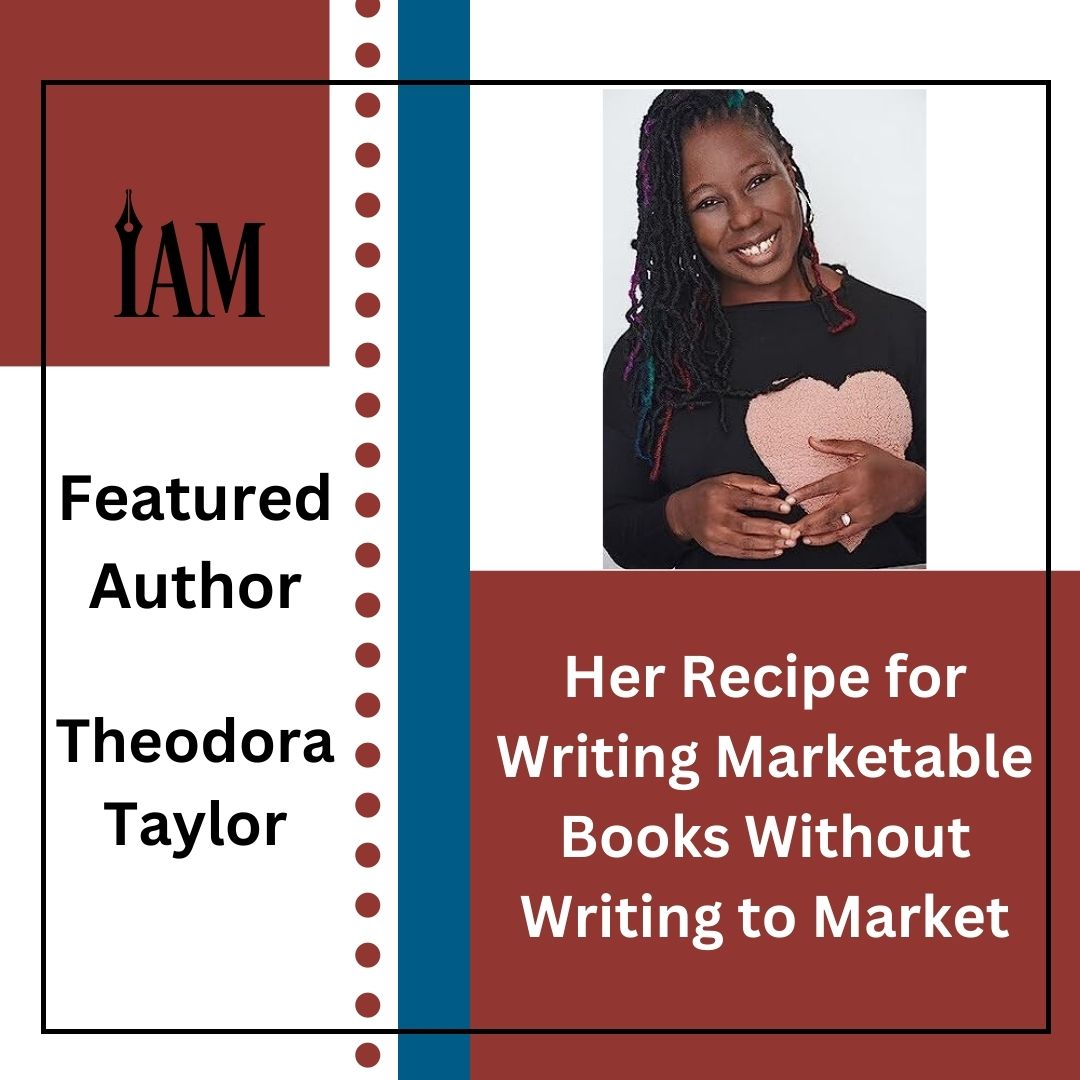
Back-to-School Tips for Author Parents
Keep Your Cool During Back-to-School
Although few people welcome the end of summer, no one dreads it more than parents—especially parents who are authors. Between too many trips for new clothes, school supplies, and haircuts; signing up for extracurriculars; and attending orientation events, parents are often left physically exhausted and mentally depleted. And every summer, the same question presents itself: Must we entirely sacrifice our writing practices (or sleep) to set our children up for success in the new academic year?
I’m responsible for the majority of caregiving for five children, toddler through early twenties, and for keeping our house up and running. As a parent and a person obsessed with time management—what I like to call “time Tetris”—I’ve developed my own hypotheses, experiments, and practices for taking care of everyone else without sacrificing my own health or dropping my writing.
The following techniques and approaches are what I’ve found to help the most with the work-life-parent balance this time of year. While I encourage you to experiment with the techniques I present, you can take what works and leave what doesn’t. You never know what little change might be the catalyst for a major breakthrough in productivity, stress reduction, or even experiencing joy amid the back-to-school season.
Schedule. Some find scheduling tedious, but it can mean the difference between feeling overwhelmed and feeling confident and on schedule with your family and your writing. Try sketching out your plans for the weeks ahead of the back-to-school rush. Start with the dates you have: the first day of school, holidays and travel plans, parties, and orientations. Even if you don’t have them all, you’ll get a bird’s-eye view of where to schedule flexible activities such as shopping trips and haircuts. Once you have the big vision, dig in and plan your weeks on Sunday evenings to determine when and where you’ll commit to your writing around other activities. Knowing exactly what’s on deck for the next day could also mean better rest and therefore more energy for writing.
Leave Plenty of Margin. Be conservative when estimating your time and energy. Always overestimate travel time to account for increased traffic, especially in the week before school starts in your area; the time required for shopping, orientation, and the rest of your to-dos; and quality family time. You’ll also want to give yourself plenty of time to hit milestones with your writing. Treat your writing blocks like you would any other appointment, and don’t allow anything but a true emergency to encroach. The world will not fall apart while you’re at your desk.
Underestimate Your Energy and Stay Flexible. Yes, you read that correctly. Allow yourself to be tired after running around all day, and don’t beat yourself up about it. Know you may experience “low energy,” and stop expecting yourself to run like a machine. You deserve happiness and rest, and your needs are not the lowest priority. Also remember that all the plans and schedules you create are merely guidelines. They are not meant to be perfect, only estimates for tending to your top priorities—including your writing. Stay flexible as you move through your week, and take advantage of opportunities to rest or write more.
Adjust Your Writing Schedule Temporarily. All your extra activity may require reevaluating your writing schedule and practices while back-to-school events keep you on your toes. If you usually stay up late to write, you may have to switch to writing in the mornings, before the day starts. Although that change can be jarring for night owls, there is an immense feeling of calm and confidence that can result from hitting your daily writing goal while you still have energy. And it can keep you from falling asleep on your keyboard and adding a few hundred repeating Js to your manuscript.
Refill Your Well. Don’t think for a second that you can skip self-care. Remember: if you aren’t taken care of, you can’t give your best to others. Your favorite show, movie, game, fitness, or hobby can and should be added to your schedule, and will also help you demonstrate a healthy attitude about self-care to your children. During busy times like the end of summer, our well can feel empty, so it’s helpful to incorporate some creative rejuvenation. Consider using writing prompts and scheduling free-writing sessions to reignite your creative spark and overcome lulls in mental energy. These sessions can keep your fire fueled through any outside chaos and overwhelm.
Try Sprints. There’s never a bad time to sprint. Micro sprints, described in Chris Fox’s book 5,000 Words Per Hour as writing just five minutes at a time and tracking the results, are a great tool for priming the pump and keeping you writing through stressful periods. It can also help you mitigate any lag in your writing pace, as you can usually fit a few five-minute sprints into your day. Even if you only write a little each day, maintaining that practice can build your consistency and keep you satisfied with your progress. It also keeps your story top of mind, preventing long breaks that cause us to forget where we left off. Being social with other adults, especially other writer parents, can also help mitigate any sense of loneliness you might endure when life gets overwhelming. Meeting for sprints, virtually or in-person, can not only satisfy your social needs but also add new words to your work-in-progress and bolster your motivation in an otherwise hectic time.
Ask for Help. Remember to ask for help when you need it. If possible, reevaluate the labor division in your household, even for just the busiest weeks. Friends and family members may also be able to help, if you’re willing to ask. Most of the people in our lives love us, enjoy helping us, and want to see us happy and successful. Even your children might be able to help if they know where they can share the load. And you don’t have to be “perfect” to be the parent your children need during this time. Model the behavior you want to see in them—which definitely doesn’t include ignoring their own health and happiness.
Plan a Writing Getaway. Schedule a writing getaway for yourself after the kids start school. This can be a night or two in a hotel with no one but you and the characters in your WIP, or it can be a late summer or early fall writing retreat with a group of friends. Either way, if you have it scheduled, the knowledge of a writing-related “reward” can sustain you through the back-to-school rush.
Check Back in When the Dust Settles. After the back-to-school rush is over and everyone is settled into their routines, be ready to leap at the opportunity to reevaluate your daily and weekly schedules and your best writing time. It may change again, but that’s okay. Stay flexible, and bend with the wind of life to continue making progress to your most meaningful writing and publishing goals.

Mastering Editing: Gratitude to Indie Authors
Ah, editing. The stage of the publishing process every author always seems eager to reach … until they reach it.
Don’t feel bad. Editors get it. We know you’ve probably frowned at your screen in confusion at some of our questions (“How do you want me to style your ellipses?”), or you’ve grumbled not-so-nice words as you opened Microsoft Word’s Track Changes and discovered a new meaning for the phrase “seeing red.” I wouldn’t be surprised if some of you have therapeutically killed us off a time or two in your drafts.
We realize, even though it’s often lumped together under one umbrella, just how much goes into editing: structural edits, beta reads, line edits, copy edits, proofreading. Examination of your story’s pace in act 2. Decisions about style—should you use American spellings as a British author? Between each of those, rewrites, revisions, and probably plenty more of the grumbling I mentioned before.
We know editing takes time, money, and a commitment to seeing the story through to the finish line. That’s why we’re grateful too. As editors, we feel validated when you reach out to us about your work because, let’s be honest, we realize our jobs couldn’t exist without you. And as some of your earliest readers, we see your dedication to making the story better with each round of revisions.
Thank you for trusting us with your books and for taking our suggestions to heart; with every story, we hope they help make the difference between a “good” story and a “great” one.
And hey, even if your editing process involves writing an untimely demise for a grammarian in your books every once in a while, I won’t judge—just as long as you’re willing to consider a few revisions to the scene when your editor reads it.
Nicole Schroeder
Editor in Chief
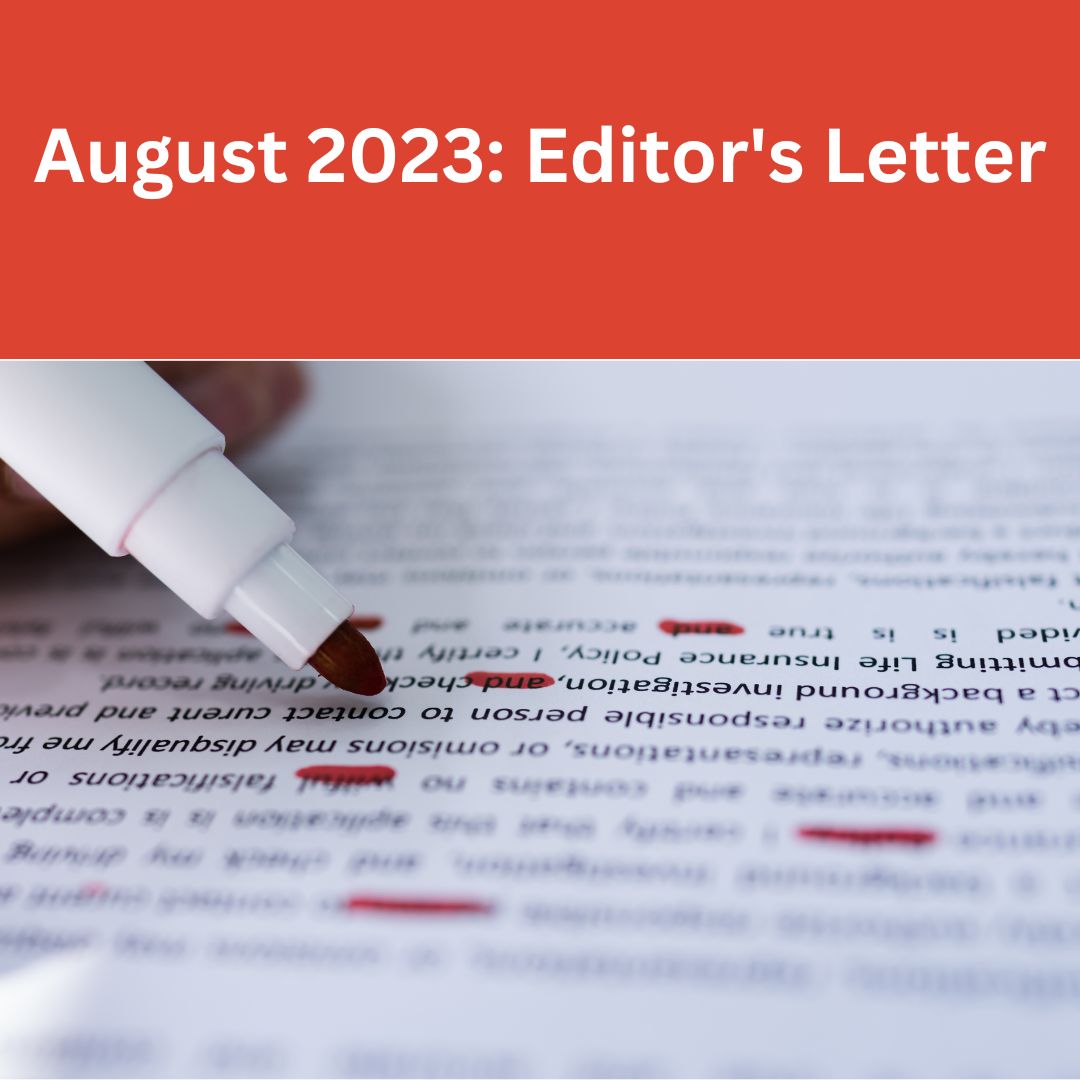
"Improve Writing Consistency with PerfectIt Editing Tool"
The Style-Checking Software Built for Editors Can Assist Authors Too
In recent years, editing and proofreading software has evolved far past spelling and grammar checks. With new tools emerging and older tools continually upgrading their abilities, simply correcting misspelled words is no longer enough for an app or tool to keep up with the competition. The market offers plenty to choose from, but as an author, the options can seem overwhelming. Still, with each tool’s distinctive pros and cons helping you polish your work in different ways, a little research goes a long way in helping you decide what will work best for your situation and style.
Built-in spell checkers found in Word and other programs can catch general mistakes, but they pale compared with recent alternatives like Grammarly and ProWritingAid. PerfectIt is another option that focuses on a slightly different aspect of the editing process.
As an author, you may not have heard of PerfectIt, since it was designed specifically for professional editors, according to CEO Daniel Heuman. “PerfectIt’s core philosophy is that people make the best editing decisions, and they always will,” Heuman writes. “We build technology to help people edit faster and better.” Nonetheless, it can be a useful addendum to your current creative workflow—and tutorial videos and demonstrations built into its website make it relatively easy to pick up as well.
PerfectIt in a Nutshell
PerfectIt is a proofreading software that runs as an add-on to Microsoft Word and checks documents for mechanical errors. What sets it apart from most other proofreading software, however, is its built-in style checker, which can ensure consistency in your manuscript when it comes to variations in spelling, capitalization, or punctuation. PerfectIt includes several built-in references and style guides, including Chicago Manual of Style (CMOS); the Merriam-Webster Dictionary; Australian, Canadian, and UK spelling; the Canadian Oxford Dictionary; Oxford English Dictionary; US Government Publishing Office Style; United Nations Editorial Style; European Union Style; World Health Organization Style; Australian Government Style; and American Legal Style. Selecting style guides in the program is as easy as checking a box. Choose the style you need, and voila! PerfectIt will check your manuscript based on the guide you’ve chosen. To change styles, follow the same process—though you will need to tell PerfectIt to run the check again if you’ve changed styles in the middle of a project.
The software also allows users to create a unique style preference outside of the program’s included style guides. If your series or genre uses a unique spelling or grammar convention, or if your editor prefers a particular style, setting up a custom style sheet allows you to check for consistency not only within a particular project but also across each of your manuscripts. For step-by-step instructions on how to do this, find PerfectIt’s official tutorial videos at https://intelligentediting.com/support/training-tutorials/video-tutorials and scroll down to “Part 1: How to Add a New Style and Copy an Existing Style.”
PerfectIt runs once you ask it to check your document; though you can run the check after you’ve completed an entire manuscript or one chapter at a time, it needs to be prompted. The software’s consistency checker notifies style differences like spelling, hyphenation, and capitalization within your document and asks what you want to do with each. For example, if “Mom” and “mom” are used within the document, PerfectIt will ask if you want to capitalize or lowercase all instances of the word, or it will allow you to make corrections case by case. The program shows every instance of inconsistency within a separate window, enabling users to see the variation and the sentence where it appears in the document. In version 5 or newer, PerfectIt will also display the appropriate advice from CMOS if you’ve selected that style guide.
Pro Tip: If you have a subscription to CMOS Online, you can link your PerfectIt license with your CMOS Online subscription to see exact references to the style manual alongside the style sheet’s suggestions. See Intelligent Editing’s guide for linking accounts by visiting https://intelligentediting.com/support/faqs and clicking on “Chicago Manual of Style.”
Some Things to Consider:
Unlike other document checkers like ProWritingAid and Grammarly, which proofread spelling and grammatical errors in real time and offer tips to strengthen your writing as you go, PerfectIt’s suggestions are given after you prompt it to begin its scan of your document and won’t offer advice on things like passive voice. Although PerfectIt can offer more detailed stylistic feedback, a program like ProWritingAid may be more suitable for line editing and copyediting help.
PerfectIt is available for both PC and Mac users; however, PerfectIt is only compatible with Microsoft Word and doesn’t yet include an online application or integration with other writing programs like Google Docs and Scrivener.
Let’s Talk Numbers
PerfectIt offers a 14-day free trial for potential users to explore all available tools and resources. After the 14-day trial, subscriptions are available on a yearly basis. One year is $90 for the Professional plan or $110 for the Elite plan, which includes a version of the program for PowerPoint along with everything available in the Professional tier. Visit PerfectIt’s pricing page at https://intelligentediting.com/buy-now/ for more information.
Currently, PerfectIt does not have a monthly payment option.
Although PerfectIt can link with your CMOS account, users need a separate subscription to CMOS to access these additional features. A subscription to CMOS Online is $43 for one year, $77 for two years, or $110 for three years. CMOS Online also offers a 30-day free trial. For more information, visit https://chicagomanualofstyle.org/help-tools/subscription.html.
In comparison, ProWritingAid offers a free version, as well as Premium and Premium Plus tiers. Premium is $30 per month, $120 annually, or $399 for a lifetime license. Premium Plus, which includes everything in the Premium version plus sixty plagiarism checks per year, costs $34 monthly, $130 annually, or $499 for the lifetime license. Grammarly offers a free tier or a Premium version with access to additional writing suggestions at $12 per month.
Pro Tip: To decide which tool is best suited to your needs, style, and workflow, all the programs listed above offer a free tier or free trial window. Upload a copy of your manuscript and work within each program to see what you like and dislike, and which programs make your editing more manageable, smoother, and faster.
Writer’s needs and budgets vary widely, and though editing programs can do a great deal of heavy lifting, there’s no substitute for a human editor or proofreader. Even so, with PerfectIt’s ability to standardize style across manuscripts and its list of features designed for professionals, the program brings a unique skill set to the table alongside similar software. It won’t replace the need for proofreading, but as an addition to one’s self-editing arsenal, it may bring authors a little closer to doing as their editors do in the meantime.

💡
The Rest of This Issue is for Paid Subscribers Only
Get more than just tips—get real results. As a paid subscriber, you'll unlock the full-color issue, VIP access to webinars and training, discounts on software and tools, and a community to support your journey.
Get more than just tips—get real results. As a paid subscriber, you'll unlock the full-color issue, VIP access to webinars and training, discounts on software and tools, and a community to support your journey.

